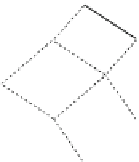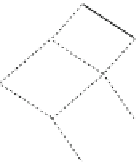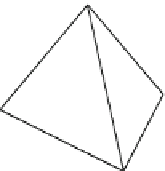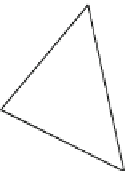Information Technology Reference
In-Depth Information
(1)
(2)
(3)
(
(
Fig. 3.
The pair of a rhombic dodecahedron and a rectangular parallelepiped which is
reversible.
edge lengths
√
3
,
√
3 and 2, and whose d
ih
ed
r
al angle of the edge with length
2is
ˀ/
2. We call such tetrahedron a (
√
3
,
√
3
,
2)-
tetrahedron
(or Sommerville
tetrahedron, [
9
,
10
]) and denote it by
ST
(see Fig.
4
).
By dissecting a
ST
into halves by the plane orthogonal to an edge with
length 2, we obtain a tetrahedron
Q
which is also a reflective space-filler, and
by dissecting
Q
into halves again by the plane orthogonal to the edge with
length 2, we obtain a tetrahedron
R
which is also a reflective space-filler (see
Fig.
4
). We call
Q
and
R
respectively a
half-ST
and a
quarter-ST
respectively.
The quarter-ST plays an important role in [
2
] where they call it a tetradron.
Note that the mirror image of a half-
ST
or a quarter-
ST
is
not
strictly
congruent to the original.
3
3
3
2
f
2
2
2
2
e
1
1
e
1
1
3
2
2
3
3
3
Fig. 4.
Reflective space-filling tetrahedra: (1) a (
√
3
,
√
3
,
2)-tetrahedron which is
denoted by
ST
: (2) a half-
ST
: (3) a quarter-
ST
.



































































































































































Search WWH ::

Custom Search